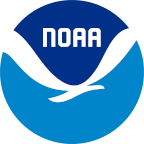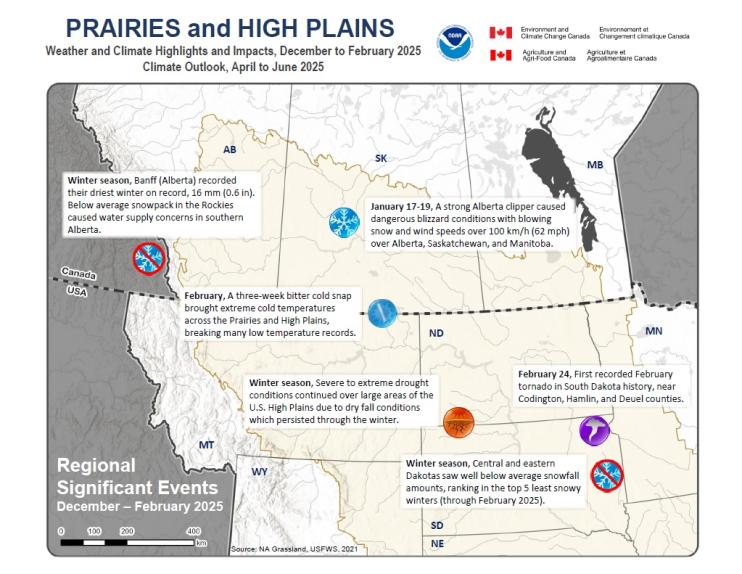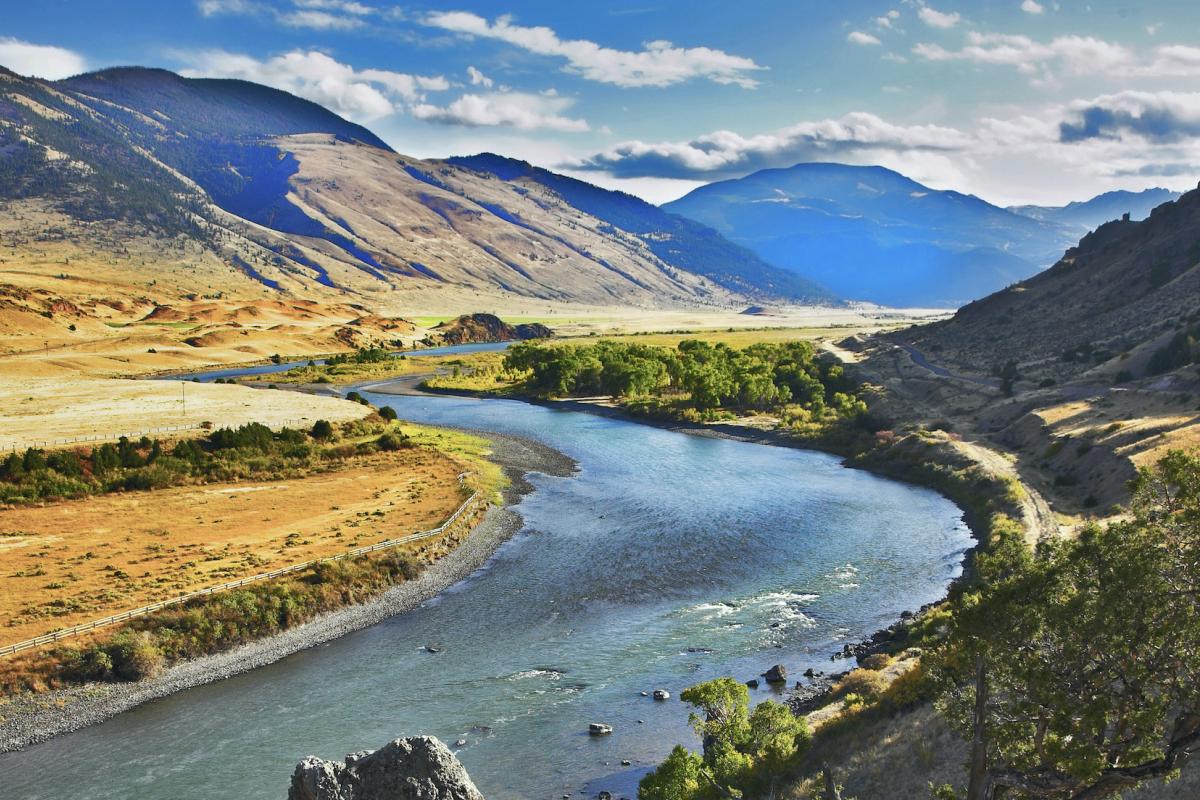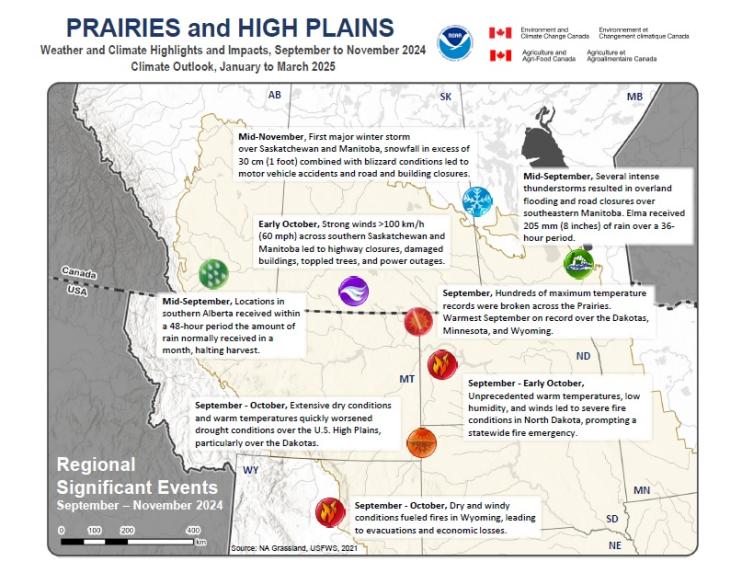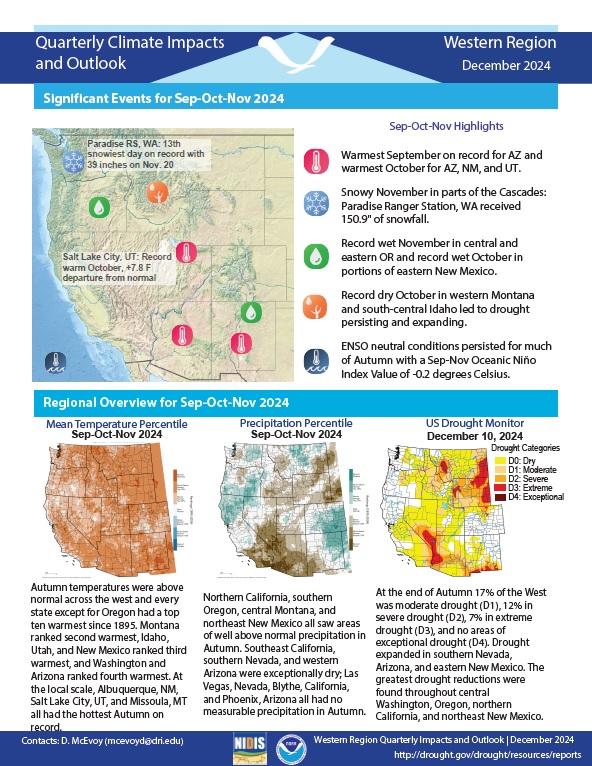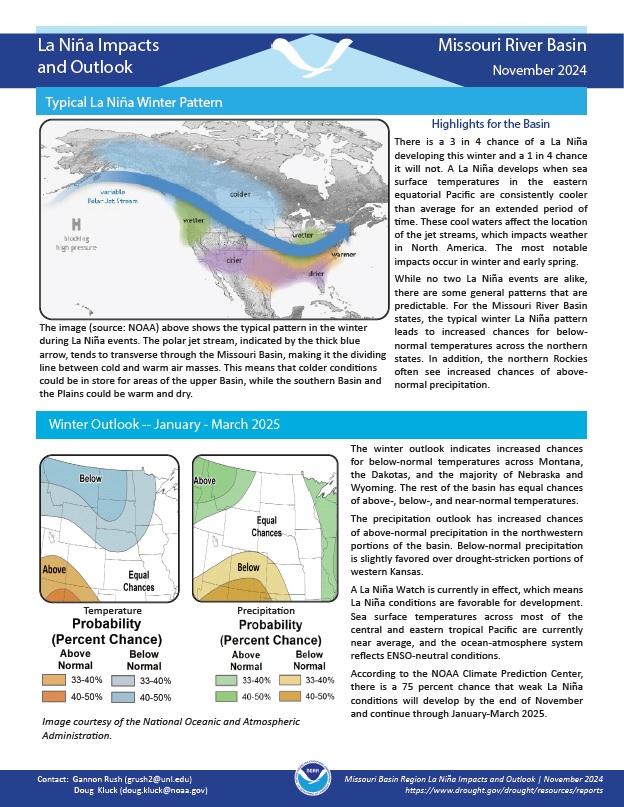Quarterly Climate Impacts and Outlook for the Canadian and U.S. Prairies and High Plains for December 2024–February 2025, with an outlook for April–June 2025. Dated March 2025.
Despite warm temperatures in December, a frigid February led to below-average seasonal temperatures across the central portion of the region. Very dry conditions were observed throughout southwestern Alberta and much of the High Plains. Areas in South Dakota, Minnesota, Wyoming, and Alberta received less than 45% of their normal precipitation this winter.
Quarterly Climate Impacts and Outlook for the Canadian and U.S. Prairies and High Plains for September–November 2024, with an outlook for January–March 2025. Dated December 2024.
Quarterly Climate Impacts and Outlook for the Western Region for September–November 2024. Dated December 2024.
Autumn temperatures were above normal across the West, and every state except for Oregon had a top ten warmest autumn since 1895. Northern California, southern Oregon, central Montana, and northeast New Mexico all saw areas of well-above-normal precipitation in autumn. Southeast California, southern Nevada, and western Arizona were exceptionally dry.
Regional groundwater measurements in the Ogallala Aquifer show ongoing declines in aquifer water quality and quantity that are being exacerbated by warming trends and highly variable precipitation. The importance of this system, which is used for agriculture and is a main driver impacting socioeconomic activity and ecosystems in the region, cannot be overstated. Addressing regional aquifer depletion and other water-related challenges, including drought, is vital and necessary work.
This handout provides information on the typical La Niña winter pattern; the La Niña outlook; potential winter and spring impacts; and comparisons of conditions during previous La Niña years for the Missouri River Basin. Updated November 2024.
NOAA’s Regional Climate Services Program created these outlooks to inform the public about climate impacts within their respective regions. Each regional report contains easy-to-understand language, and anyone can access them through the U.S. Drought Portal.
